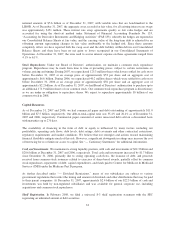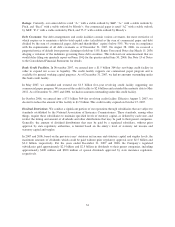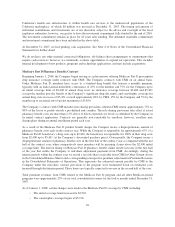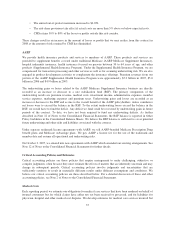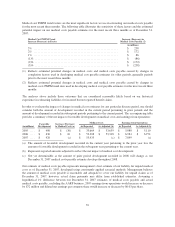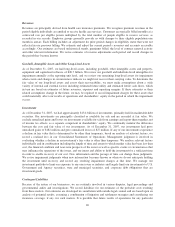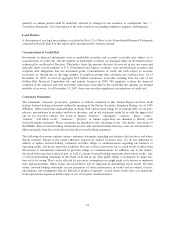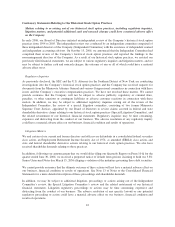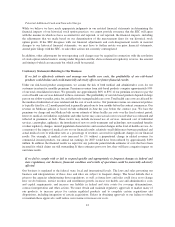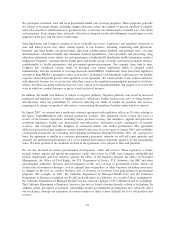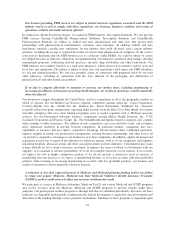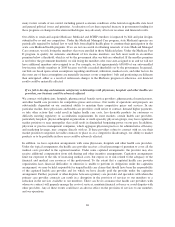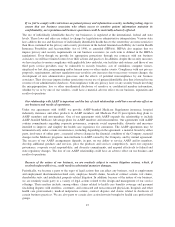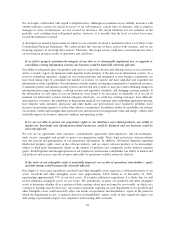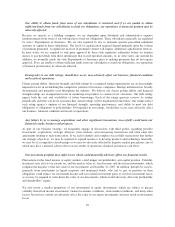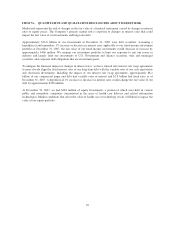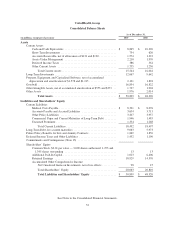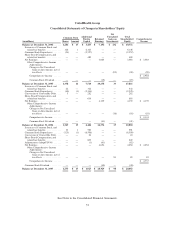United Healthcare 2007 Annual Report Download - page 45
Download and view the complete annual report
Please find page 45 of the 2007 United Healthcare annual report below. You can navigate through the pages in the report by either clicking on the pages listed below, or by using the keyword search tool below to find specific information within the annual report.Potential Additional Cash and Noncash Charges
While we believe we have made appropriate judgments in our restated financial statements in determining the
financial impacts of our historical stock option practices, we cannot provide assurance that the SEC will agree
with the manner in which we have accounted for and reported, or not reported, the financial impacts, including
the adjustments that we made based on our determination of the measurement dates for our historical stock
option grants. If the SEC disagrees with our financial adjustments and such disagreement results in material
changes to our historical financial statements, we may have to further restate our prior financial statements,
amend prior filings with the SEC, or take other actions not currently contemplated.
In addition, other adjustments for non-operating cash charges may be required in connection with the resolution
of stock option-related matters arising under litigation and the above-referenced regulatory reviews, the amount
and timing of which are uncertain but which could be material.
Cautionary Statements Relating to Our Business
If we fail to effectively estimate and manage our health care costs, the profitability of our risk-based
products could decline and could materially adversely affect our future financial results.
Under our risk-based product arrangements, we assume the risk of both medical and administrative costs for our
customers in return for monthly premiums. Premium revenues from risk-based products comprise approximately 90%
of our total consolidated revenues. We generally use approximately 80% to 85% of our premium revenues to pay the
costs of health care services delivered to these customers. The profitability of our risk-based products depends in large
part on our ability to predict, price for, and effectively manage health care costs. Total health care costs are affected by
the number of individual services rendered and the cost of each service. Our premium revenue on commercial policies
is typically fixed for a 12-month period and is generally priced one to four months before the contract commences. Our
revenue on Medicare policies is based on bids submitted in June the year before the contract year. We base the
premiums we charge and our Medicare bids on our estimate of future health care costs over the fixed contract period;
however, medical cost inflation, regulations and other factors may cause actual costs to exceed what was estimated and
reflected in premiums or bids. These factors may include increased use of services, increased cost of individual
services, catastrophes, epidemics, the introduction of new or costly treatments and technology, new mandated benefits
or other regulatory changes, insured population characteristics and seasonal changes in the level of health care use. As
a measure of the impact of medical cost on our financial results, relatively small differences between predicted and
actual medical costs or utilization rates as a percentage of revenues can result in significant changes in our financial
results. For example, if medical costs increased by 1% without a proportional change in related revenues for
commercial insured products, our annual net earnings for 2007 would have been reduced by approximately $190
million. In addition, the financial results we report for any particular period include estimates of costs that have been
incurred for which claims are still outstanding. If these estimates prove too low, they will have a negative impact on
our future results.
If we fail to comply with or fail to respond quickly and appropriately to frequent changes in federal and
state regulations, our business, financial condition and results of operations could be materially adversely
affected.
Our business is regulated at the federal, state, local and international levels. The laws and rules governing our
business and interpretations of those laws and rules are subject to frequent change. The broad latitude that is
given to the agencies administering those regulations, as well as future laws and rules could force us to change
how we do business, restrict revenue and enrollment growth, increase our health care and administrative costs
and capital requirements, and increase our liability in federal and state courts for coverage determinations,
contract interpretation and other actions. We must obtain and maintain regulatory approvals to market many of
our products, to increase prices for certain regulated products and to complete certain acquisitions and
dispositions, including integration of certain acquisitions. Delays in obtaining approvals or our failure to obtain
or maintain these approvals could reduce our revenue or increase our costs.
43


